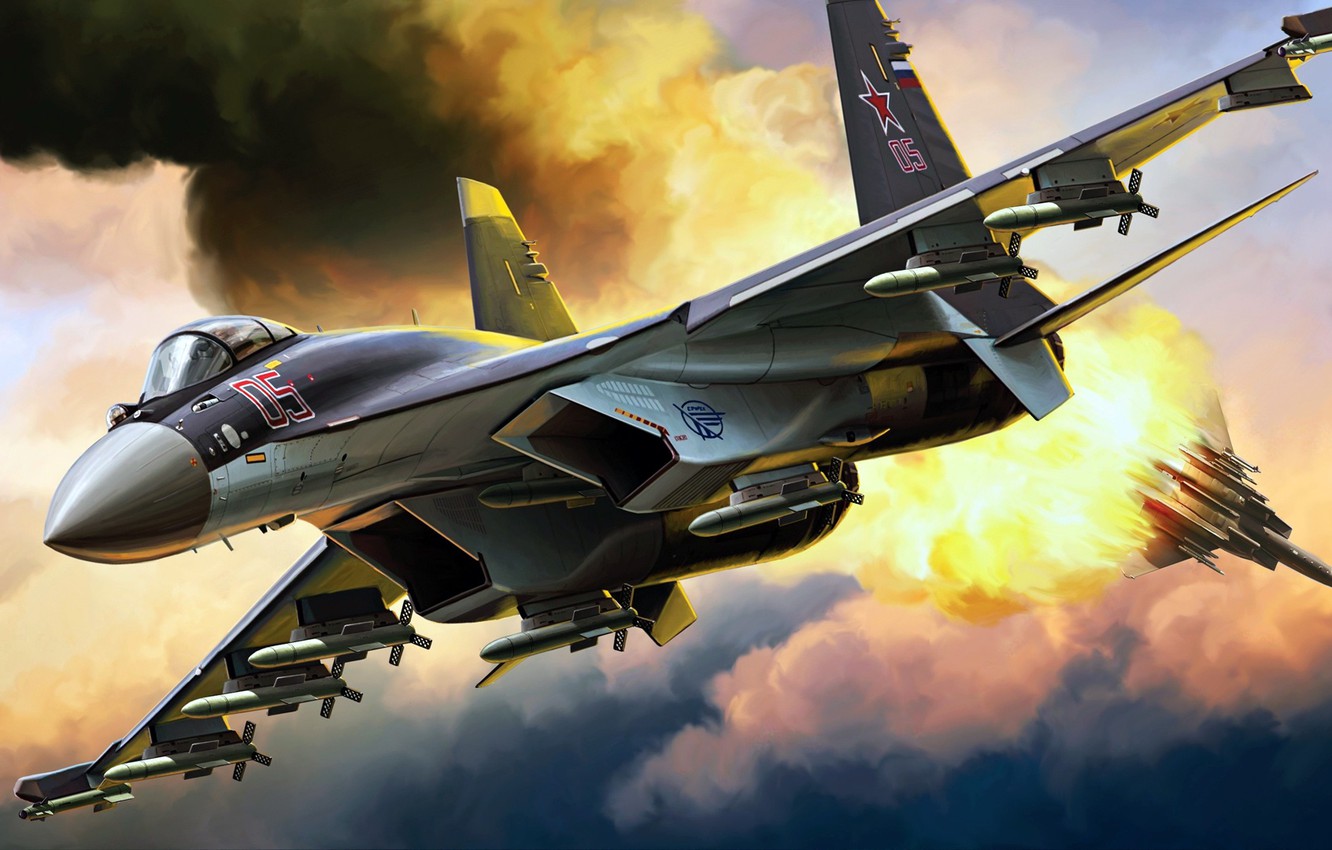In light of the superior capabilities of Russia’s fighter jets, Ukrainian pilots seem cautious, actively seeking to avoid confrontations with Russian aircraft, according to reports.
Ivan, the flight commander of the Russian aviation squadron, stated that Ukrainian pilots, upon encountering Russian fighters in the skies, are opting not to carry out their assigned tasks. Instead, they attempt to retreat and seek to evade such engagements.
In a video published by the Defense Ministry, Ivan said that there have been instances where an airborne adversary was swiftly detected. However, owing to the successful tactical maneuvers of Russian fighter jets, the adversary decided against pursuing its combat objectives, choosing instead to withdraw and return to its base.
He stressed that Ukrainian pilots are actively striving to evade such confrontations. Furthermore, footage presented by the Russian Ministry of Defense showcased the combat operations involving Su-35S fighters, including one piloted by Ivan.
While surveilling the airspace within the designated special operation zone in the Kupiansk direction, Ivan detected emissions from an enemy radar station.
“I carried out a combat flight while performing an air duty mission. Radiation from an enemy radar station was detected. I captured the target and launched a missile at the target. I receiving confirmation of the destruction of the target" – pilot of Su-35#Ukraine #Ukrainewar pic.twitter.com/1Nmn5m1oOC
— Chronology (@Chronology22) December 12, 2023
Acting promptly, he relayed this information to the command post, leading to the flight commander’s approval to launch an air-to-surface missile.
“As a result of the launch of an airborne guided missile, radar radiation from the target disappeared. Based on the surveillance, confirmation was received of the destruction of the target,” the Ministry of Defense added.
Meanwhile, the flight commander remains confident that the American F-16 fighters, sought after by Ukraine, won’t intimidate Russian pilots.
Russian experts and military officials believe that the country’s current fleet of fighters can effectively counter American F-16 aircraft in terms of speed and armament.
Earlier this month, Russian military expert Anatoly Matviychuk highlighted that despite the reservations, the Su-57, a fifth-generation fighter, confidently stands against not only the F-16 but also the F-22 and the F-35.
Matviychuk emphasized that this promising fighter matches and exceeds its American counterparts in various aspects.
What Prompts Ukraine’s Concern About Russian Su-35 Fighter Jet?
The Su-35, a versatile and supermaneuverable single-seat fighter, is designed to engage enemy air, ground, and naval surface forces.
Additionally, it is equipped to perform aerial surveillance. It can destroy ground infrastructure targets situated at a considerable distance from the aircraft’s home airfield, even in the presence of air defense systems.
Throughout the conflict, the Ukrainian Air Force has consistently identified Russia’s Su-35 as their most significant challenge. The extensive deployment of Su-35s by the VKS on the frontlines has also instilled fear among Ukrainian air defense operators.
Even operators trained on the PAC-3 Patriot missile defense systems consider the Su-35 a prime target, acknowledging the substantial threat these Russian fighter jets pose.
The Russian Su-35s, operating from a distance beyond Ukraine’s air defense range, present a significant challenge proving difficult for Ukraine to address or overcome.
Therefore, Ukrainian fighter jets often maneuver at very low altitudes to evade air-to-air missiles fired by Russian Su-35 fighter jets. When targeted, the pilots must immediately abort their missions and prioritize survival.
Ukraine typically deploys two fighter jets for attack missions: one engages ground assets while the other provides air cover against incoming air-to-air missiles. However, the consistent presence of Su-35s on air patrols has made executing attack missions challenging for Ukrainian aviators.

Russian air patrols can detect jet takeoffs deep within Ukrainian territory. Their R-37M missiles boast ranges of 150–200 kilometers (93–124 miles), surpassing the Ukrainian rockets limited to 50 kilometers (31 miles) against airborne targets. This capability allows Russian aircraft to intercept Ukrainian jets before they pose a threat.
A November 2022 report from the UK-based Royal United Services Institute (RUSI) highlighted the Su-35S’s effectiveness, particularly with the R-77-1 long-range missile, maintaining high lethality against Ukrainian aircraft near the conflict zones.
Furthermore, recent reports indicate Russia’s shift from older fighter jets to the more advanced Su-35 aims to establish localized air superiority along the frontlines. Aside from challenging Ukrainian fighters, the Su-35s have engaged in risky intercepts of NATO military aircraft.
Nonetheless, despite facing challenges in achieving complete air superiority over Ukraine, Russian fighter jets persist in conducting continuous surveillance. They vigilantly patrol the airspace, remaining poised to intercept and neutralize any hostile aircraft within their confined operational sphere.
- Contact the author at ashishmichel(at)gmail.com
- Follow EurAsian Times on Google News




